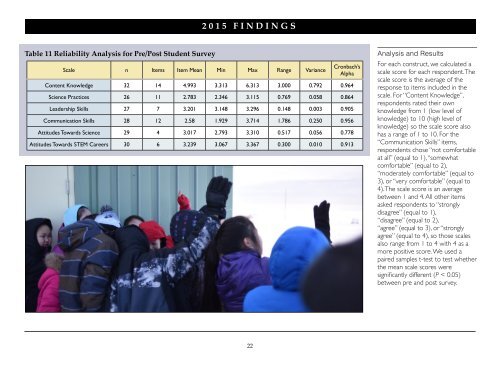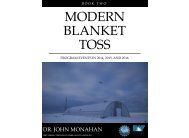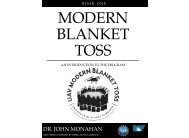Modern Blanket Toss: Findings and Observations
This book is the last in a series of three covering the National Science Foundation awarded Modern Blanket Toss project. In this book are the evaluation findings for each of the three years as well as observations from Modern Blanket Toss staff.
This book is the last in a series of three covering the National Science Foundation awarded Modern Blanket Toss project. In this book are the evaluation findings for each of the three years as well as observations from Modern Blanket Toss staff.
You also want an ePaper? Increase the reach of your titles
YUMPU automatically turns print PDFs into web optimized ePapers that Google loves.
2015 FINDINGS<br />
Table 11 Reliability Analysis for Pre/Post Student Survey<br />
Scale n Items Item Mean Min Max Range Variance<br />
Cronbach’s<br />
Alpha<br />
Content Knowledge 32 14 4.993 3.313 6.313 3.000 0.792 0.964<br />
Science Practices 26 11 2.783 2.346 3.115 0.769 0.058 0.864<br />
Leadership Skills 27 7 3.201 3.148 3.296 0.148 0.003 0.905<br />
Communication Skills 28 12 2.58 1.929 3.714 1.786 0.250 0.956<br />
Attitudes Towards Science 29 4 3.017 2.793 3.310 0.517 0.056 0.778<br />
Attitudes Towards STEM Careers 30 6 3.239 3.067 3.367 0.300 0.010 0.913<br />
Analysis <strong>and</strong> Results<br />
For each construct, we calculated a<br />
scale score for each respondent. The<br />
scale score is the average of the<br />
response to items included in the<br />
scale. For “Content Knowledge”,<br />
respondents rated their own<br />
knowledge from 1 (low level of<br />
knowledge) to 10 (high level of<br />
knowledge) so the scale score also<br />
has a range of 1 to 10. For the<br />
“Communication Skills” items,<br />
respondents chose “not comfortable<br />
at all” (equal to 1), “somewhat<br />
comfortable” (equal to 2),<br />
“moderately comfortable” (equal to<br />
3), or “very comfortable” (equal to<br />
4). The scale score is an average<br />
between 1 <strong>and</strong> 4. All other items<br />
asked respondents to “strongly<br />
disagree” (equal to 1),<br />
“disagree” (equal to 2),<br />
“agree” (equal to 3), or “strongly<br />
agree” (equal to 4), so those scales<br />
also range from 1 to 4 with 4 as a<br />
more positive score. We used a<br />
paired samples t-test to test whether<br />
the mean scale scores were<br />
significantly different (P < 0.05)<br />
between pre <strong>and</strong> post survey.<br />
22




